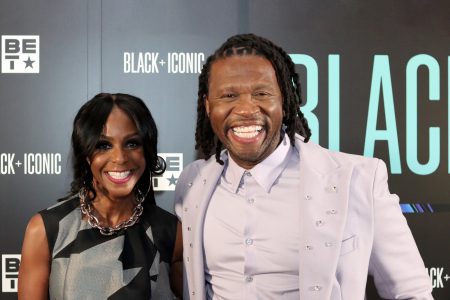DEI is the most common acronym in the diversity space. D for diversity, E for equity — not equality — and I for inclusion. Why the difference?
Equality suggests that treating everyone equally will solve the diversity problem, yet that has resulted in little to no change. Equity by contrast is about meeting the needs of individuals that are systemically marginalized because of factors outside their control — race, ethnicity, class, age or gender most commonly — yet many more.
There are three key differences between equity and equality. Equity means:
- Providing resources to those that need them the most first
- Educating the majority group on their role in inclusion
- Proactively communicating the importance that DEI is not a zero-sum game
Related: 18 Business Leaders on Creating an Inclusive and Equitable Society
Provide resources to those that need them the most first
Equity is about putting the needs of those most marginalized first. That means those that have been systemically disadvantaged due to their gender identity, race, ethnicity or other dimensions of diversity are prioritized with resource allocation. Resources such as education, mentorship opportunities and sponsorship need to be allocated to those that reflect the general population. Unfortunately, resources are often overallocated to the majority group that already holds the most privilege and proxy to power, reinforcing the status quo.
Examples of resource allocation are programs inclusive development programs that amplify the skills and voices of people of color, mentorship programs that target underrepresented demographics with access to senior leaders and sponsorship programs that ensure that people’s work is equitably recognized. Too often, promotion and representation rates dwindle for women, people of color, those with disabilities and the LGBTQ+ community. Equity seeks to right that wrong.
Educate the majority group on their role in inclusion
However, these programs will fail if the majority group doesn’t understand their role in facilitating an inclusive environment where diverse talent can thrive. Often the majority group has not had the lived experiences of being part of a marginalized group and so they lack the context and understanding to be helpful.
Panel discussions that bring to life the real experiences of underrepresented groups in a thoughtful pragmatic way can help bridge the gap. In addition, proven resources, documentaries, books and podcasts can help the majority group understand the nuances of inclusion.
It is likely leaders will make mistakes in the DEI conversation. Having tools and resources is critical for the majority group to proactively avoid some of these likely missteps.
- Tokenism: Tokenism occurs when individuals or organizations make superficial efforts to include diverse individuals or groups without genuinely valuing their contributions. It is important to go beyond representation and create inclusive environments where everyone’s voice is heard and respected.
- One-size-fits-all approach: Another mistake is assuming that DEI initiatives can be applied universally without considering the specific needs and experiences of different groups. It is important to recognize and address the unique challenges faced by various communities and tailor strategies accordingly.
- Failure to address systemic issues: DEI efforts should not solely focus on individual actions or behaviors. It is crucial to identify and challenge the systemic barriers and biases that perpetuate inequality and exclusion. This may involve examining hiring practices, policies and organizational culture.
- Lack of genuine leadership commitment: DEI initiatives require genuine commitment and support from leadership. Without strong leadership buy-in, these efforts can lack the necessary resources, accountability and sustainability to effect meaningful change.
- Overlooking intersectionality: Intersectionality refers to the interconnected nature of social categorizations, such as race, gender, sexuality and class, which can create overlapping and interdependent systems of discrimination. Ignoring intersectionality can result in exclusionary practices and a limited understanding of the experiences of marginalized individuals.
- Relying on quotas: While quotas can be a useful tool to increase representation, relying solely on them can be counterproductive. It is important to create inclusive environments where individuals from diverse backgrounds have equal opportunities to thrive, rather than solely focusing on numerical targets.
- Lack of ongoing evaluation and feedback: DEI initiatives should be regularly evaluated and adjusted based on feedback from the affected communities. Failure to gather input and measure the impact of these initiatives can hinder progress and perpetuate ineffective practices.
- Performative allyship: Performative allyship refers to instances where individuals or organizations publicly express support for marginalized groups without taking substantive actions to address underlying issues. It is important to back up intentions with meaningful actions and engagement.
Equity is about meeting leaders where they’re at and equipping them proactively with tools and information to combat these missteps.
Proactively communicating the importance that DEI is not a zero-sum game
As with any shift in culture or change, the why is pivotal. People need to understand why equity is necessary. Equality is the goal – equity is how we get there. DEI is about doing things differently and challenging the status quo. We can’t solve a problem by doing things the same way that created the problem. That’s where equity comes in.
Oftentimes, the majority group might feel alienated or that they’re somehow left out of promotional opportunities because of the focus on diversity. The opposite is often true. When we have diverse representation in decision-making, we have higher rates of innovation, higher revenue rates and profitability. Rather than thinking about it as my seat at the table versus your seat at the table, or my pie slice versus your pie slice, the pie collectively grows bigger and they’re more seats at the table for everyone.
Many people get overwhelmed with diversity language. Just two letters in the difference between equality and equity mean two very different approaches. As leaders, it’s critical that we understand that equity is the path to equality and be willing to do things differently to achieve real diversity.
Read the full article here










